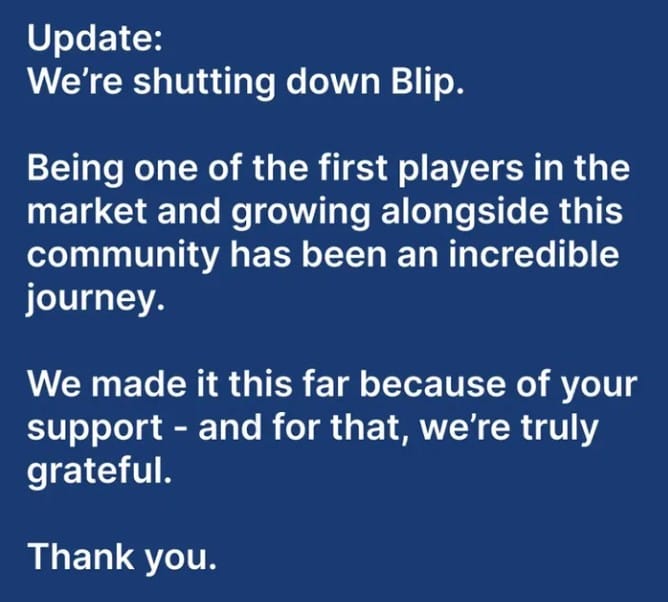July 14, 2025: Blip, a quick fashion delivery startup that once promised 30-minute deliveries of trendy clothing, has quietly shut down operations. The announcement was made by co-founder Ansh Agarwal in a reflective LinkedIn post, marking the end of a venture that tried to blend speed with style.
Started in 2024 by Ansh Agarwal and Sarvesh Kedia, Blip aimed to do for fashion what Zepto did for groceries. The app launched in October 2024 with 10 in-house fashion brands and more than 25,000 SKUs, offering its service in select parts of Bengaluru. Despite the unique offering, sustaining the business proved to be a bigger challenge than expected.
Why Blip Didn’t Work: Fashion Delivery Startup Closes After Funding Crunch

In his post, Agarwal cited multiple roadblocks. “After building for over a year, we have finally called it a day,” he wrote. According to him, operating with limited capital made it tough for Blip to compete in a market that demands constant spending on logistics, marketing, and inventory.
Blip also tried a different approach to fashion delivery compared to other players. This required fresh implementations and time to convince stakeholders, which delayed their market entry. “This affected our go-to-market strategy and slowed us down,” he added.
Eventually, with funding drying up and execution delays mounting, the founders made the tough call to pull the plug. “It didn’t make sense for us to continue,” Agarwal concluded.
A Trend of Sudden Shutdowns?
Blip’s closure is not an isolated case. Just last week, an Indian IT startup working in chatbot and cloud solutions also shut down without warning. Employees were told in a surprise video call that the company had run out of funds and would not continue operations. No salaries were to be paid for that month, and all investor support had ended.
These incidents are a reminder that while India’s startup scene continues to grow, survival remains uncertain without solid execution and financial backing.
Analysis: What Went Wrong for Blip?
- Lack of Capital: Operating in the fast-commerce sector requires deep pockets. Bootstrapping may offer independence, but it limits growth and ability to scale quickly.
- Execution Challenges: Even a good idea needs flawless execution. Blip’s novel approach meant more time spent on stakeholder alignment, delaying launches.
- Crowded Market: Competing with better-funded players like Zepto or Swiggy-style services in a different vertical (fashion) added pressure to deliver faster and better.
- Consumer Habits: While groceries are a daily need, fashion is not. Building a user base for impulse fashion purchases requires heavy marketing — something a bootstrapped startup can rarely afford.



